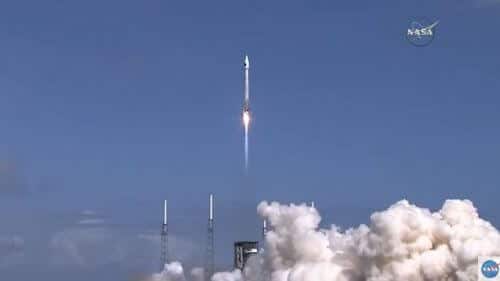The launcher that was replaced, the junk that didn't arrive, all of these were overcome by the students from the Science Center in Herzliya, Maofakim schools, Yeruhem, the Bedouin Diaspora and Ofra, in the last three years until the successful launch of Dokifat 2

It wasn't them who helped me build the satellite, it was me who helped them here and there and mostly didn't interfere. This is what the main mentor of the Dokifat 2 project, the aerospace industry man, said at the event to honor the launch of the satellite along with 28 other tiny satellites to the International Space Station, held at the Herzliya Science Center, the place that coordinated the project.
As recalled in a previous article, Sharon Mashal, science coordinator at the Herzliya Science Center, stated that No screw was screwed in and no line of code was written by an adult. The same article also detailed the division between the various teams of the Science Center in Herzliya, and Maofakim, Yeruchem, the Bedouin Diaspora, and Ofra schools.
"This is a challenge that very few universities have met. We started with 80 academic institutions in the world that registered for the QB50 project of the European Union, not a project of the Israel Space Agency, as soon as you enter the project of the European Union you must meet the standards, lots and lots of paperwork in English that documents, explains, details the entire testing process, the design, the initial phase, The physical planning - the stage before the production of the satellites, and of course the development itself, the integration up to the preparations for the launch."
According to him, Dr. Meir Ariel, director of the Science Center (who is together with a delegation of students from Herzliya and the Bedouin diaspora at the launch site at Cape Canaveral in Florida), intervened when he saw that the zabil - the box in which the satellite is waiting for launch and from which it will be launched - was not arriving, he printed in XNUMXD a twin of the component , and the experiments were done on it, so when the students arrived in the Netherlands for the introduction phase, the process went smoothly and took a few hours compared to a few days for other groups.
The launch of the Dokifat 2 satellite from the vantage point of the student delegation from Israel. Courtesy of GOOGLE EARTH and the YNET website
Later, the mentor said that it was necessary to change the design of the satellite because its launcher was replaced several times - something that has happened to him so far in only one satellite project as part of his work in the aerospace industry. Initially, the project was supposed to be launched on a Ukrainian satellite, and go into space immediately after launch. This requires planning to withstand vibrations and noises during launch. At some point, the mission was transferred to the International Space Station, and the developers had to meet NASA's requirements arising from the fact that the satellites will stay and be launched from an environment where human activity takes place - the International Space Station, and not even one of them should explode or catch fire.
Another rocket was replaced at the very last moment, when the mission was almost about to be launched on an Orbital company's Antares rocket - the one with which the European Space Agency signed a launch agreement. As you remember, a rocket of this model exploded shortly after it took off from the launch center on Wallops Island in Virginia in 2014, and it only returned to activity in January of this year, but again Orbital was asked by NASA to make improvements before another launch, therefore Orbital had to use the Atlas-5 launcher of the company "ULA" - UNITED LAUNCH ALLIENCE - a joint subsidiary of Boeing and Lockheed Martin for the launch of the Cygnus supply spacecraft to the space station, among other things the tiny satellites were part of the cargo.
The box carrying the satellites will be released in about a month and a half, and each of the satellites will be released from its position by means of a spring, with their initial speed being the flight speed of the space station - 7 kilometers per second. After that, their trajectory will be deliberately known, and during the descent they will measure the properties of the remnants of the atmosphere or thermosphere in these layers, up to a height of about one hundred kilometers above the surface of the earth, and then they will burn up in the atmosphere.
See more on the subject on the science website:
- The Israeli student satellite Dokifat 2 was successfully launched into space today
- "We built a training system in which the graduates train the young people entering the Dokifat 2 project"
- Not a single screw in the Dokifat 2 satellite was screwed in by an adult, and not a single line of code was written by an adult
- Exclusive to the science website: first exposure of the student satellite Dokifat 2

2 תגובות
Fingers crossed for Duchift.
Successfully.
In my opinion, whoever manages to build a small satellite is entitled to be called a "boy" not a "boy".